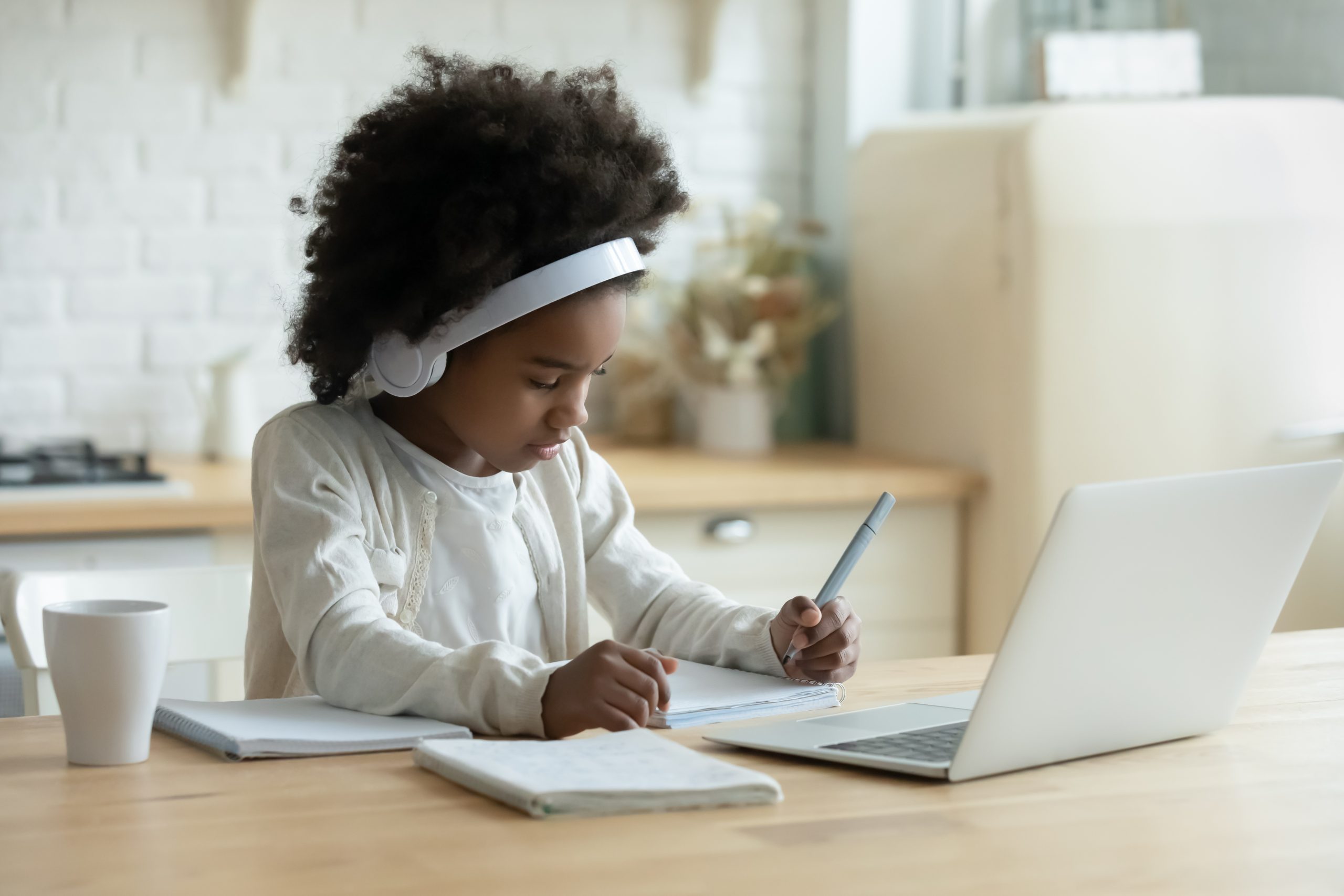As a direct result of the COVID-19 pandemic, many students had to stay home for their schooling and use computers or other electronic devices they may or may not have been using before. Even with students returning to school in person, there is still a dependency on electronic devices in schools. Most kids start school at the age of five, but when do they start using tech for school? And what does tech look like in schools?
What Is Blended Learning?
Blended Learning is an education style that takes traditional face-to-face teaching and supplements it with electronic devices and online media. (Check out how to set up remote learning spaces at home.)
Even before the global pandemic, Common Sense Media found that 42% of children 0–8 had their own tablet at home, which was an increase from 2013. That increase has been felt in schools as well. Since then, more money, including out of pocket spending by teachers, has been allocated to introducing more technology to the classroom. There’s a term used in education: one-to-one computing (or 1:1). This is from the Common Core State Standards’ goal to put tech devices in the hands of students—one device per student. In 2020, 65% of schools had a program to get electronic devices for students to do schoolwork at home, an increase from 26%.
Schools Are Still Trying to Adapt to Tech Post-Lockdown.
Edweek did a survey of teachers to dig into if or how schools may have been affected by the pandemic.
Teachers reported on their ability to use tech in the classroom. While 87% said their abilities improved, 3% said they worsened because they were unable to keep up with the changes. Tech even changed how teachers communicate with parents.
But what about teachers’ opinions of how tech can help with education? Of the teachers interviewed, 58% found they felt that tech can help in the classroom, while some teachers (21%) felt that tech isn’t helpful in class, and 6% of district leaders felt it negatively impacted their schools.
We know that teachers are using tech more, but what about students? In an effort to match the increased need for tech access in remote learning, schools have increased students’ accessibility to devices by 59%. The majority of teachers (73%) found that increased tech use made teaching easier.
Unfortunately, these statistics also reveal a large number of students without virtual learning options. Congress approved 122 billion dollars in stimulus relief for K-12 public schools in March 2021. Part of this is to make up for learning lost in 2020 during the global pandemic.
What Devices Are in Classrooms?
Classrooms aren’t static, unchanging places. From the introduction of chalkboards to video tapes to the Internet, classrooms have evolved, and continue to do so. Modern innovations led to computers, then tablets, and eventually smartphones.
The economic status of the school district can impact what is available in schools. For example, not every school is going to have a Macbook for each individual student, but most classrooms do have projectors that teachers can sign up to use. This is all part of the one-to-one ratio of tech devices with students. Some schools use rentals or computer carts to compensate for insufficient funding. While these communal devices can decrease the weight in students’ backpacks (a tablet weighs much less than four textbooks), there are students who may be left behind or struggle because of the economic disparity.
What Does the Future Look Like?
There’s already a lot of developed tech in classrooms. This ranges from 3D printers and VR to smart whiteboards and smart tablets. Tech will continue to improve and affect the learning process, so what will the classroom look like in the coming years?
Back in 2015, a journalist followed a teacher through a day in their tech-based classroom. At this particular school, each individual student had an iPad that they used for every subject. They constantly had tech in their hands. While there are benefits of learning from tech, there are some downsides as well. In a tech-based elementary school, tactile, physical skills can be left on the wayside. Activities like writing with pencils, flipping pages, or even playing with blocks are critical for developing gross and fine motor skills. Another potential problem with a tech-based classroom is the lack of face-to-face interactions. Children learn how to interact and communicate with others by seeing facial expressions and body language in person.
There are benefits to using tech in the classroom, however. It allows teachers to give instant feedback and prepares students for a life filled with and potentially dependent on technology. Tech is also a great aid for students with disabilities.
So What Is the Ideal?
Blended learning is shaping our future, but we should also make sure we keep the ideal elements of traditional learning in circulation. Tech should enhance, not replace physical skill learning, and Troomi can help your child find the balance between the two! Check out this Troomi blog post about how to decrease tech consumption. Troomi phones are a great way to teach kids how to moderate their tech use while also giving them access to educational apps and teaching them responsibility when it comes to tech. Check out Troomi for a phone that fits your child’s needs.


